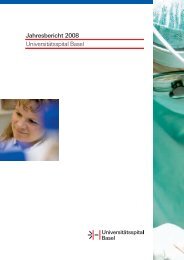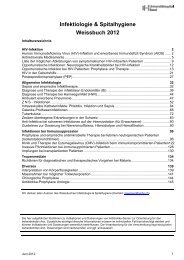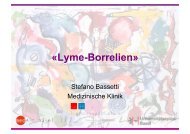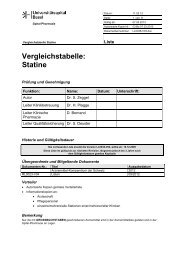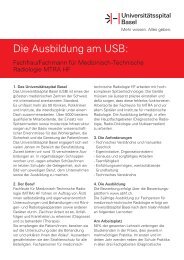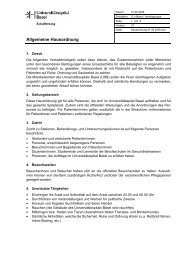Transmucosal Nasal Drug Delivery: Systemic Bioavailability of ...
Transmucosal Nasal Drug Delivery: Systemic Bioavailability of ...
Transmucosal Nasal Drug Delivery: Systemic Bioavailability of ...
You also want an ePaper? Increase the reach of your titles
YUMPU automatically turns print PDFs into web optimized ePapers that Google loves.
3. Midazolam<br />
Administration <strong>of</strong> high midazolam doses, overdoses or in situations with impaired<br />
pharmacokinetics, the most vital symptoms to be monitored are areflexia, hypotension,<br />
cardiorespiratory depression, and apnea. Higher risk for cardiorespiratory depression, apnea, and<br />
areflexia is reported for co-administration <strong>of</strong> other central nervous acting drugs and inhibitors <strong>of</strong><br />
CYP 3A4.<br />
3.4 Midazolam delivery<br />
In Switzerland, midazolam (Dormicum ® 1 mg/ml and 5 mg/ml) is approved for intravenous or<br />
intramuscular injection or oral administration as tablets (Dormicum ® 7.5 mg and 15 mg). Rectal<br />
administration <strong>of</strong> Dormicum ® (1 mg/ml and 5 mg/ml) is also compendial, but not widely used.<br />
Because <strong>of</strong> pain and distress, injections for drug administration are not popular and patients (adults<br />
and children) usually prefer alternative drug administration.<br />
Oral midazolam delivery, the most popular drug administration route, is associated with<br />
considerable first-pass effect (bioavailability only 30-50% [Documed 2006]). Furthermore, oral<br />
midazolam administration is disposed to a delayed onset <strong>of</strong> action, additionally impaired by<br />
ingestion. Due to the fluctuant bioavailability, the pharmacological effect is hard to predict and the<br />
dose to be applied difficult to define.<br />
The pharmacokinetic disadvantages <strong>of</strong> rectally applied midazolam are analog to the oral<br />
administration a slow onset <strong>of</strong> action and a low peak plasma concentration [Malinovsky et al.,<br />
1993].<br />
Table 3-2 summarizes the characteristics <strong>of</strong> the different modes <strong>of</strong> midazolam delivery. Commonly,<br />
intravenous or intramuscular injection <strong>of</strong> midazolam is performed if rapid onset <strong>of</strong> action is desired<br />
[Burstein et al., 1997, Uygur-Bayramicli, 2002]. As a convenient and reliable alternative to<br />
intravenous and intramuscular administration, nasal midazolam delivery has received considerable<br />
attention not only for pediatric patients (see Table 3-4).<br />
Intranasal drug delivery is painless, results in rapid drug absorption and circumvents hepatic first<br />
pass metabolism. Additionally, the convenient administration results in high acceptance by the<br />
patients. A number <strong>of</strong> studies report the beneficial effects <strong>of</strong> nasal delivered midazolam in patients,<br />
both children and adults (see Table 3-4).<br />
Katja Suter-Zimmermann Page 27 <strong>of</strong> 188 University <strong>of</strong> Basel, 2008




